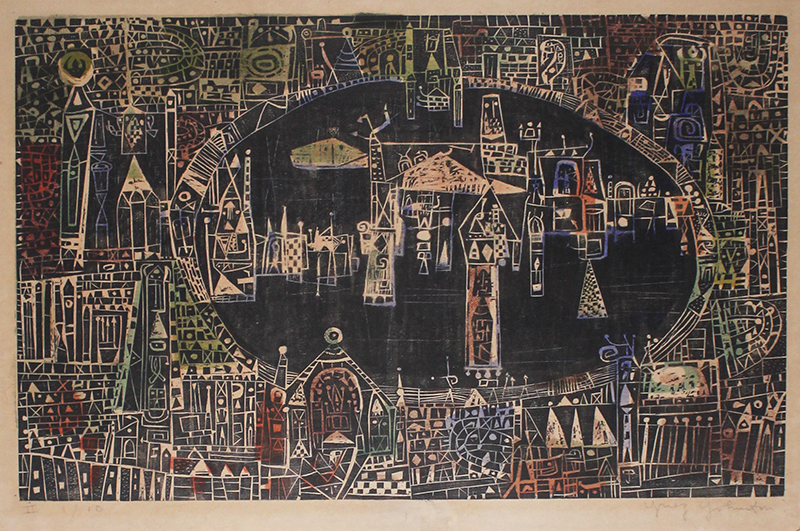
19th, 20th & 21st Century Fine Prints
707-546-7352 · fax 707-546-7924 · web: www.annexgalleries.com · email: artannex@aol.com
Blue Garden by Ynez Johnston

Blue Garden
Ynez Johnston
Blue Garden
Ynez Johnston
1920 - 2019 (biography)This large, early color woodcut by Ynez Johnston was done in 1950. Another impression, with different coloring, is illustrated on page 40 of Ynez Johnston by Gerald Nordland. On page 39 Nordland quotes Johnston regarding her method of printing:
"The techniques I used were pretty simple. Mostly I used a knife to cut the lines, also the usual wood cutting tools and also different size nails to pound holes and sort of dotted lines; sometimes etching tools to deepen or scratch out the grain. The color was applied with stencils, but not as in an etching. I'd make six or seven light proofs from the block (lightly inked) and cut out the areas I wanted color to appear.
Then, on the piece of (rice) paper destined to become the print I'd place the stencil and using a water based paint, sponge the color through the stencil apertures. After all the color had thus been applied I'd struggle with the problem of how to register the paper and the block - always a head-ache - and usually a bit off, because after the block was inked with printing ink and the paper laid down upon it, no adjustment could be made."
Nordland comments on 'Blue Garden' on page 40:
"In Blue Garden (pl. 17) she (Johnston) utilizes the multiple perspective devices of the etchings, flattens space, integrates foreground, mid-ground and background into a Byzantine-modern composition. The units of effect, the individual knife mark or linear gouge, the finger-smudged color applied through stencil, has a forceful, expressive, and abstract quality not dissimilar to the stone tessare in Byzantine mosaics. The total effect is formal, unique and masterful."
